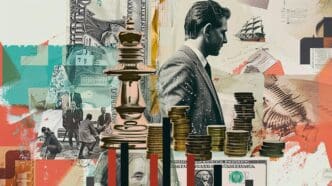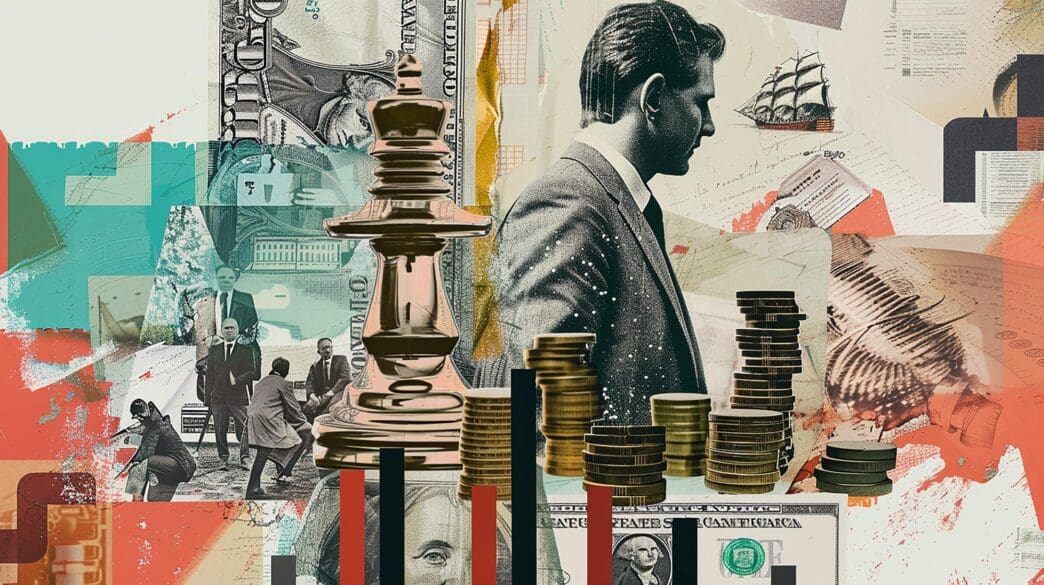Executive Summary
The Story So Far
Why This Matters
Who Thinks What?
The trajectory of top marginal tax rates on the wealthiest Americans has profoundly influenced the United States economy, shaping everything from income distribution to public investment and overall economic growth over the last century. From the initial imposition of federal income tax in the early 20th century to modern-day debates, these rates have been a central battleground for competing economic philosophies, directly impacting how wealth is accumulated, spent, and taxed, and consequently, how the nation’s economic landscape evolves.
The Dawn of Income Taxation and Early Shifts
Before the 16th Amendment was ratified in 1913, the U.S. federal government primarily relied on tariffs and excise taxes for revenue, with no broad-based income tax. The initial income tax law established a modest top marginal rate of just 7% on incomes exceeding $500,000, affecting only a tiny fraction of the wealthiest citizens. This marked a significant shift towards a more progressive taxation system, albeit in its nascent form.
World War I quickly necessitated a dramatic increase in government funding, leading to a surge in top marginal tax rates. By 1918, the highest rate had soared to 77% on incomes over $1 million, reflecting the nation’s urgent need to finance its war efforts. This period demonstrated the government’s willingness to leverage taxation on the wealthy for national priorities.
The Roaring Twenties and the Great Depression
Following World War I, the 1920s saw a reversal of these wartime tax increases, largely championed by Treasury Secretary Andrew Mellon. Mellon argued that high tax rates stifled investment and economic growth, advocating for significant cuts to the top marginal rates. By 1925, the top rate had dropped to 25%, a policy often credited by proponents with fueling the decade’s economic boom.
However, the onset of the Great Depression in 1929 prompted another radical shift in tax policy. President Franklin D. Roosevelt’s New Deal era brought about substantial increases in top marginal rates, reaching 79% by 1935. These higher taxes on the wealthy were intended to fund expansive social programs, redistribute wealth, and provide relief and recovery during the economic crisis, reflecting a belief that the wealthy should contribute more to national welfare.
Mid-Century Peaks and Post-War Prosperity
World War II once again pushed top marginal tax rates to unprecedented levels, peaking at 94% on incomes over $200,000 by 1944. These extremely high rates were crucial for financing the war effort and were widely accepted as a national sacrifice. This period cemented the idea that the wealthy had a greater obligation during times of national emergency.
Remarkably, high top marginal rates, often exceeding 90%, persisted throughout the 1950s and early 1960s, a period often referred to as America’s “golden age” of capitalism. This era was characterized by robust economic growth, a burgeoning middle class, and significant public investment in infrastructure and education. Economists continue to debate whether these high rates stimulated or constrained growth, but it’s clear that prosperity coexisted with very progressive taxation.
President John F. Kennedy initiated a move to cut these high rates, arguing that they discouraged investment and risk-taking. His tax cuts, enacted after his death in 1964, reduced the top marginal rate from 91% to 70%. This decision was a precursor to future supply-side economic policies, signaling a shift in thinking about the relationship between tax rates and economic dynamism.
The Rise of Supply-Side Economics
The 1970s brought economic challenges like stagflation, leading to renewed calls for tax reform. This environment paved the way for the radical tax policy shifts of the 1980s under President Ronald Reagan. Embracing supply-side economic theory, Reagan argued that lower tax rates on the wealthy and corporations would incentivize work, saving, and investment, ultimately “trickling down” to benefit the entire economy.
The Economic Recovery Tax Act of 1981 significantly cut individual income tax rates, and the Tax Reform Act of 1986 further reduced the top marginal rate from 50% to 28%. This marked a dramatic departure from the post-war consensus, ushering in an era of lower taxes for the wealthiest. Proponents point to the economic growth of the late 1980s and 1990s as evidence of success, while critics highlight a concurrent rise in income inequality.
During the 1990s, President Bill Clinton oversaw some increases in the top marginal rates, raising them to 39.6% for the highest earners. This period, characterized by a booming economy and technological innovation, demonstrated that economic growth was possible even with somewhat higher taxes on the wealthy, challenging some of the more extreme supply-side arguments.
21st Century Dynamics and Ongoing Debates
The early 2000s saw further tax cuts under President George W. Bush, which reduced top marginal rates again. These cuts were initially set to expire but were extended, becoming a recurring point of political contention. The 2008 financial crisis intensified debates about the fairness and effectiveness of the tax system, prompting discussions about wealth distribution and economic stability.
Under President Barack Obama, the top marginal income tax rate reverted to 39.6% for high-income earners, and new taxes were introduced to help fund the Affordable Care Act. These changes aimed to increase revenue and address income inequality following the recession. The economic recovery during this period continued to fuel the debate over whether higher taxes on the wealthy hindered or helped economic progress.
President Donald Trump signed the Tax Cuts and Jobs Act of 2017, which significantly reduced the corporate tax rate and lowered individual income tax rates across many brackets, including a cut in the top marginal rate to 37%. This legislation was pitched as a boost to business investment and job creation, with proponents arguing it would stimulate economic growth. Critics, however, pointed to the disproportionate benefits for the wealthy and corporations, and concerns about rising national debt.
Currently, the Biden administration has proposed increasing corporate tax rates and raising the top marginal income tax rate on the wealthiest Americans. These proposals aim to fund infrastructure, social programs, and reduce income inequality, reigniting the perennial debate about the optimal level of taxation on the wealthy to foster both economic growth and social equity.
The Enduring Economic Impact
The historical journey of tax rates on the wealthiest Americans reveals a cyclical pattern driven by national needs, prevailing economic theories, and political ideologies. From funding wars and social safety nets to stimulating investment, these rates have been a powerful lever of government policy. Their impact extends beyond mere revenue generation, influencing capital formation, income inequality, and the overall structure of the U.S. economy.
While economists continue to debate the precise effects of high versus low top marginal tax rates on economic growth, investment, and innovation, it is clear that these policies have profoundly shaped the distribution of wealth and opportunities. The ongoing discourse underscores the complex interplay between fiscal policy, economic performance, and societal values, ensuring that the taxation of the wealthiest will remain a central pillar of economic policy discussions for the foreseeable future.








